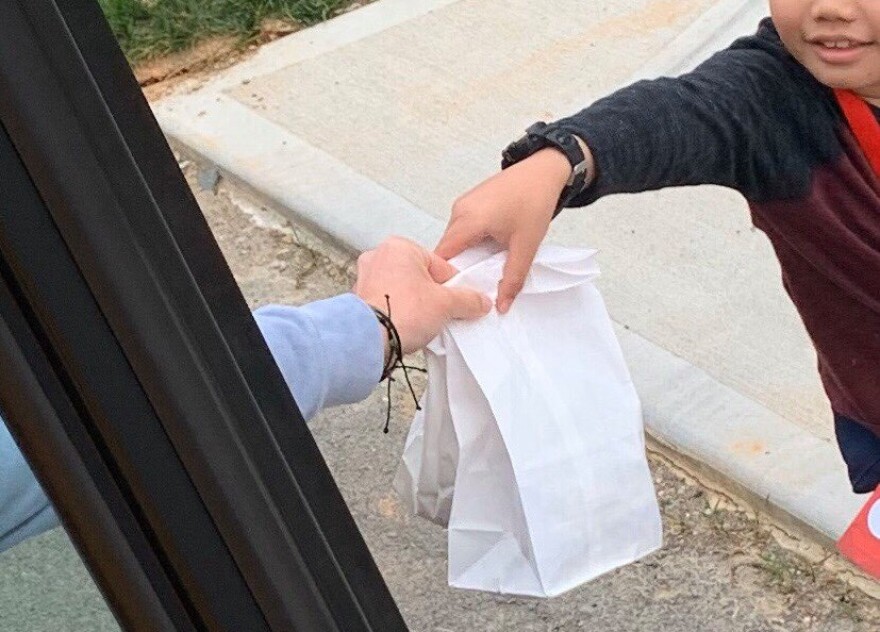Imagine a nine year old kid, stuck at home, who typically eats both breakfast and lunch at school. So what happens if his parents are struggling more than ever, and schools close to prevent the spread of COVID-19?That's exactly what worried Stanly County Public Schools Superintendent Jeff James - except multiply that worry by several thousand. About two-thirds of the students in his rural school district, northeast of Charlotte, receive free or reduced price lunch through the federal school lunch program.
"Do the math, you're talking about 3,000 meals a day for students that probably depend on us for meals, if not more," James said.
When Governor Roy Cooper ordered schools closed, Stanly County Schools' child nutrition director Mandy Melton quickly reached out to her cafeteria workers over the weekend.
"It was uncharted water. They received a text or an email from me Sunday night with a plan that they had never laid eyes on," Melton said. "Not a single person called and said, 'I can't, I won't.'"
By Monday morning, that plan was in place. Eight schools in Stanly County qualify to run federally-funded food programs free to all children, based on the level of poverty in their area. Cafeteria workers ran the kitchens at all eight of those schools, in coordination with the district's transportation department.
"We devised a plan to run all of our county bus routes out of those eight area eligible sites," Melton said. "It was very important to serve out of those sites so that every meal we served was at no cost."

School staff are pitching in and now delivering more than 8,000 meals a day to students and their siblings, along their normal bus routes. Under federal guidelines, any child under 18 -- whether they normally qualify for subsidized lunch or not -- can receive the free meals.
Teaching assistants, custodians, guidance counselors and teachers volunteered to help hand out bags that include lunch and a breakfast for the next day.

Melton has received overwhelming encouragement from her community about the new bus stops, in the form of phone calls and social media posts.
She says some of the first deliveries were a surprise to many:
"An elderly neighbor reached out to me to say, 'I was at my house and the children that live next door ride the bus -- and the bus pulled up and it honked the horn, and honked the horn again, and honked the horn again, till they ran out of the house to get their meals.'"
This plan also serves another role beyond feeding hungry kids - it keeps hourly school support staff, such as bus drivers, paid.
The North Carolina Department of Public Instruction has assured school districts that school employees will be paid as long as they are working. For many teachers, this will mean coordinating e-learning days from home; but for bus drivers and cafeteria workers, this meal service is a means of staying on payroll while students are home.
"All of my employees are working and all my employees are getting paid," Melton said.
Many North Carolina school districts are enacting similar plans, delivering meals and even homework to students -- and it's a consistent reminder that their school community is strong.
As prevention measures tighten in the coming weeks, Melton says now she only worries how long these deliveries can last.










